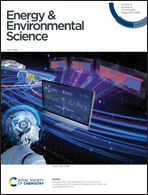Rethinking nitrate reduction: redirecting electrochemical efforts from ammonia to nitrogen for realistic environmental impacts†
Abstract
The excessive use of nitrate in agriculture and industry poses a significant threat to human health and ecosystems. To effectively manage the nitrogen cycle (N-cycle) in nature and to deal with nitrate pollution in wastewater, various electrochemical approaches have been developed to convert nitrate into N-products. Recent research works have focused their efforts on electrochemical nitrate reduction (eNO3R) to ammonia (NH3) as “an alternative approach to the Haber–Bosch process” while reducing the environmental impacts. However, when considering challenges due to the low concentration of nitrate in wastes and difficulties in extracting as-synthesized NH3 and comparing this scale with the scale of current NH3 and nitrate production, such an eNO3R to NH3 approach at the largest possible scale, even without examining its economic viability and overall environmental implications, will have an insignificant impact. Therefore, we recommend that rational implementation approaches for nitrate treatment should involve converting nitrate ions at low concentrations into nitrogen (N2) gas or recycling them at high concentrations to produce other nitrate chemicals or fertilizers.



 Please wait while we load your content...
Please wait while we load your content...